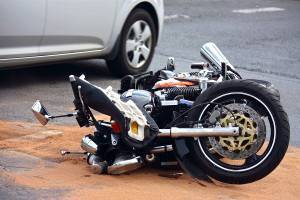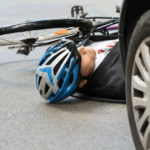Many different types of vehicles share the roads, streets and highways in the United States. Sharing lanes may not always be easy, especially when it involves two very distinct types of vehicles, such as motorcycles and automobiles. The different size and nature often results in serious accidents. In fact, according to the National Highway Traffic Safety Administration (NHTSA), in 2013 alone, more than 88,000 motorcyclists were injured and 4,668 died in motorcycle-automobile accidents.
Although accidents cannot be totally prevented, there are certain steps both motorists and motorcyclists can take to reduce the likelihood of such accidents. Some ways to safely share the road with motorcycles include:
#1 Give Motorcycles the Lane
You always should give the motorcycle the entire lane. Some drivers think it may be acceptable to drive in a lane with a motorcycle. However, the motorcyclist needs more room to be able to move safely.
#2 Watch for Motorcycles When Turning Left
Nearly 40% of motorcycle accidents happen because a car turns left in front of it. All drivers must especially watch for motorcycles when turning left across traffic.
#3 Motorcycles Have Narrow Profile!
Most drivers are trained to watch for large vehicles, such as cars and trucks. Motorcycles obviously have a much smaller size and profile. Not only are they harder to see, but their smaller size can make it harder to judge how far away they are and how fast they are moving.
#4 Use Your Turn Signal
All drivers should use their turn signal to tell other drivers what they are about to do. This is especially critical for motorcyclists. Using your turn signal allows the motorcyclist to know what you are going to do and to find a safe place on the road.
#5 Watch Your Blind Spot
Motorcycle accidents often happen when a motorcycle is in the motorist’s blind spot. As such it is important to look carefully when checking your blind spot before you enter the lane.
#6 Beware Of Motorcycle Turn Signals Left On
Motorcyclists may forget to turn off their turn signal because it does not click with sound the same as a car. Therefore, a left turn signal may not always indicate the biker wanting to make a turn or change lanes.
#7 Road Conditions Are More Dangerous for Motorcycles
Any dangerous road condition is generally much more dangerous for a motorcyclist. He may change lanes quickly to avoid water, gravel, potholes, traffic, railroad crossings and more.
#8 Increase Following Distance
If you are behind a motorcyclist, increase your following distance by three or four seconds. This will allow both of you more time to maneuver in an emergency.
Consult with a Personal Injury Attorney in Los Angeles
If you or a loved one has been injured in a motorcycle accident, you should immediately consult with an experienced Los Angeles motorcycle accident attorney. For more information or to schedule a free consultation with an attorney, call the Law Offices of Samer Habbas today at 888.848.5084.
Samer Habbas, Esq
State Bar: #243683
Samer Habbas is a California attorney with over 15 years of experience in personal injury law. Throughout his career, he has successfully recovered over $300 million for his clients, solidifying his reputation as a leading advocate in the field.
Samer swiftly gained recognition for his adept negotiation skills and unwavering dedication to his clients. His practice spans a wide range of personal injury cases, including car accidents, dog bites, funeral home abuse, premises liability, and wrongful death.
Samer is known for his compassionate approach and commitment to securing favorable outcomes for his clients. His expertise has earned him the trust and respect of both his clients and his peers within the legal community. He is also deeply invested in giving back to his community. He actively participates in pro bono work and volunteers his time to various charitable organizations. Samer is a champion for those who have been wronged, leveraging his extensive experience and expertise to make a meaningful difference in the lives of his clients and his community.
Recent Post
-
April 15, 2024
-
April 12, 2024
-
April 9, 2024
-
April 8, 2024
-
April 8, 2024













